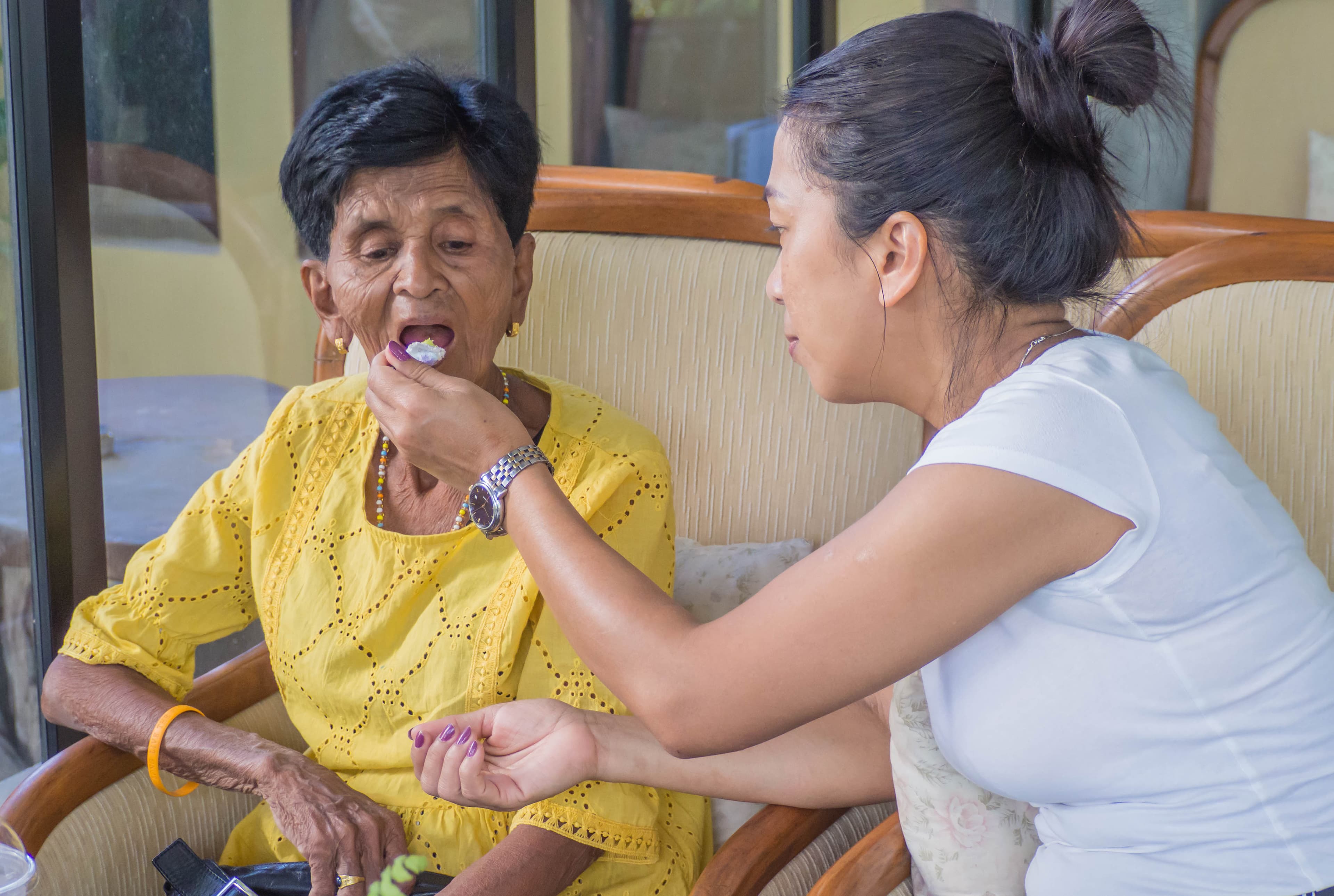Many older adults and those with chronic illnesses struggle to maintain a healthy weight.
“As we age, we lose muscle mass very easily and fast,” said Juliana Tamayo, a Registered Dietitian (RD) based in Washington, DC. “Once a person reaches a certain point, regaining weight can be extremely difficult, as the body continues to use reserves to provide energy for daily activities.”
Excessive weight loss can lead to serious health problems, but proper nutrition can turn things around. Below is a step-by-step guide for helping a loved one gain weight.
What You’ll Need
The items you’ll need to help a loved one gain weight depend on various factors, including the cause of their weight loss and general health. Still, Tamayo says there are several items worth stocking up on, including:
Healthy fats (e.g., olive oil or avocado oil)
Nutrient-dense ingredients (e.g., avocados, peanut butter, chia seeds)
Over-the-counter protein shakes (e.g., Boost and Orgain)
Consider buying food storage containers as well. Prepackaging snacks and meals can help save you time and energy.
Steps To Help a Loved One Gain Weight
Step 1: Have An Honest Conversation
If your loved one is losing weight, it’s essential to have an open conversation.
“Start by checking in with the person you are caring for and hear them out,” Tamayo said. “Why are they losing weight? Is it related to a loss of appetite? Are they feeling depressed? Or do they lack access to food?”
Step 1A: Schedule a Doctor’s Appointment
“When the answer is lack of appetite, depression, anxiety, or any other medical symptom, then a visit to a healthcare provider is warranted,” Tamayo said. “Weight loss isn’t normal, especially after middle age, so finding why it is happening is important.”
Step 1B: Establish Food Security
If your loved one is experiencing weight loss because they can’t cook or go to the grocery store, securing food and access is the first step.
Caregiving Pro Tip: The United States Department of Agriculture (USDA) offers several types of food assistance to seniors, children, and families in need.
Step 2: Work With a Dietitian or Nutritionist to Establish a Meal Plan and Eating Schedule
Once you determine the source of your loved one’s weight loss, partner with a food specialist, like a dietitian or nutritionist. These healthcare professionals can recommend snacks, meals, and supplements that align with your loved one’s nutritional needs.
Step 3: Replace Light Meals and Snacks with Nutrient-Dense Foods
Small meals and snacks keep hunger at bay, but they won’t necessarily help your loved one gain weight.
“Focusing on nutrient-dense food options is always the best choice,” Tamayo said. “Instead of making a green salad, attempt to add salmon, eggs, avocado, bacon, cheese, ham, or chicken to it.”
“Likewise, If soup is the only thing that seems appetizing to your loved one, try blended (or pureed) meals. These foods have a creamy, souplike consistency but contain more nutrients.”
Step 4: Supplement Meals with Nutritional Drinks and Shakes
Weight loss often occurs alongside oral health problems, like missing teeth and difficulty swallowing. Nutritional drinks and shakes provide a nutrient-rich alternative to regular food. They’re packed with vitamins, protein, and extra calories to encourage muscle growth and weight gain.
Recommended Reading: All About Nutritional Drinks and Shakes
Step 5: Replace Low-Fat and Fat-Free Foods with Higher-Fat Alternatives
Increasing your loved one’s fat intake is one of the easiest ways to add extra pounds. In addition, mixing cheese, butter, milk, or cream into dishes adds extra protein and calories.
“Instead of fat-free dairy, go with the full-fat option,” Tamayo said.
Step 6: Monitor Meals and Snacks
It’s important you don’t nag your loved one, but if they’re underweight, missing meals and snacks isn’t an option. “Accompany your loved one during meal times to make sure they eat accordingly,” Tamayo said.
If you don’t live together, check in with regular phone calls or Facetime. Most importantly, keep track of when, how much, and how often your loved one eats. There’s no one-size-fits-all approach to gaining weight.
“The recommendations provided in this article are adult guidelines,” Tamayo said. “Children and teenagers fall under a completely different set of rules when it comes to gaining weight.”
Need More Information?
Helping family caregivers is what we do! Whether you’re trying to find a protein shake that meets your loved one’s nutritional needs or have questions about nutrition and feeding, our friendly Caregiving Specialists can assist. Call (800) 696-CARE or send an email to support@carewell.com.





